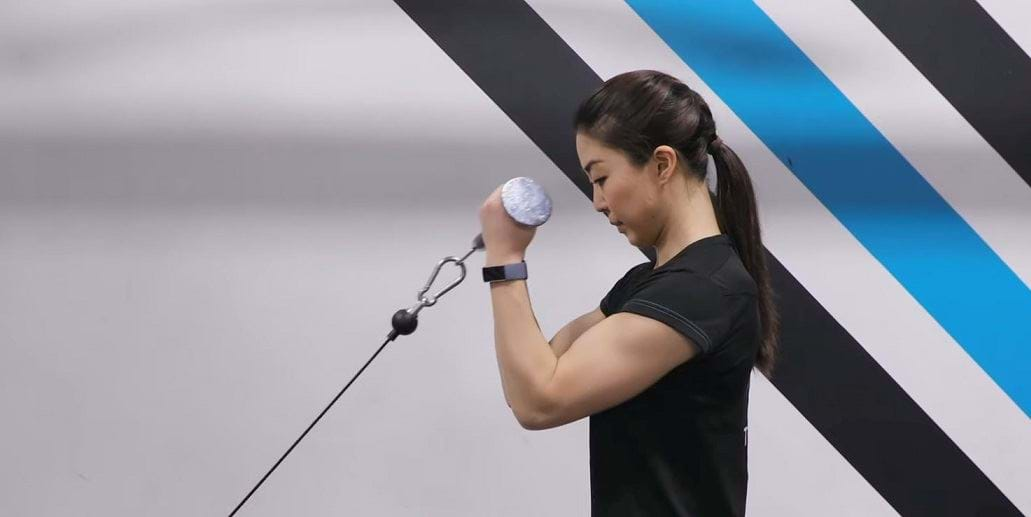Cable Curls
What Is A Cable Curl

Cable curls use the cable machines to train the biceps. As with all bicep curl variations, the aim of the cable curl is to lift the load by bending at the elbow and curling the weight towards the shoulders. The cable set up provides greater stability than other bicep curl options and may aid the performer in keeping form and targeting the muscles effectively.
The weight stack of the cable curl also allows progress to be added more frequently than with free weight curls, especially once you begin curling 10kg or above, due to the small weight increments on the cable machine. This can mean more frequently progressive overloading, aiding bicep strength and hypertrophy.
Check out some other bicep curl variations: hammer curls, concentration curls, preacher curls, spider curls, zottman curls
Commonly Asked Questions On Cable Curls
Cable curls are an isolation exercise that works the biceps brachii, brachialis, the forearms, and the anterior deltoids.
Cable bicep curls are an effective way to isolate and challenge the biceps. Compared to other bicep curl variations, cable curls provide greater tension throughout the full movement which can help with strength and hypertrophy. The fixed cable path can also help to improve form as it stabilises the movement.
Cable curls do work the long head of the bicep. The arms are positioned at the side of the body which is the favoured angle for the development of the long head.
Cable Bicep Curls Tips
Cable curls are less prone to form errors as the use of a cable machine eliminates the momentum that that can occur in a free weight bicep curl. Having said this, leaning backwards and allowing the elbows to flare can contribute to cable curl mistakes and should be avoided when performing the cable curl to ensure the focus remains on the biceps.
How To Do A Cable Curl
Set up the cable machine using a rope, straight bar, or V-shaped attachment at a height that allows your arms to be fully extended.
Stand in front of the machine and grip the attachment with a supinated (underhand) grip for the V-Shape and straight bar or a neutral (palms facing each other) grip for the rope.
Engage your core and then squeeze your biceps as you bend at the elbows to curl the attachment up to your shoulder.
Lower the attachment slowly extending your arms, until it returns to the starting position.
If you’re not sure if any of the above exercises are suitable for you, please consult your doctor before you start it. Need guidance on how to perform the exercise? Ask a personal trainer at your gym.